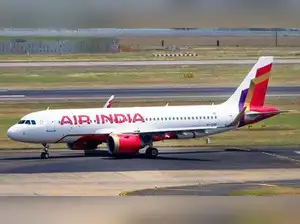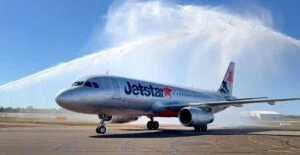In a recent incident that has garnered significant attention, a US passenger jet experienced a mid-air ‘Dutch roll’ due to being left out in a storm, according to a preliminary report. The unsettling episode, which occurred on a commercial flight, underscores the potential risks associated with extreme weather conditions and the importance of stringent operational protocols.
The aircraft, operated by a major US airline, was subjected to severe weather while parked on the tarmac before takeoff. Prolonged exposure to the storm led to the development of the ‘Dutch roll’ phenomenon shortly after the jet became airborne. A ‘Dutch roll’ is a complex oscillatory motion in which an aircraft simultaneously yaws and rolls, often leading to a disconcerting experience for both passengers and crew.
Initial findings from the investigation indicate that the aircraft’s exposure to high winds and turbulence while grounded may have contributed to the destabilizing forces encountered during flight. This incident highlights the critical need for airlines to adhere to rigorous weather assessment protocols and ensure that aircraft are adequately protected from adverse weather conditions when parked.
Passengers aboard the flight reported feeling significant turbulence and unusual movements shortly after takeoff. The flight crew acted swiftly to stabilize the aircraft, employing specialized maneuvers to counteract the ‘Dutch roll’ and ensure passenger safety. Despite the alarming nature of the incident, the plane landed safely without any injuries reported.
Aviation experts emphasize that while ‘Dutch roll’ is a rare occurrence, it can pose significant challenges to flight crews. Modern aircraft are equipped with advanced stabilization systems designed to manage such aerodynamic anomalies, but the role of pilot training and quick response is paramount in mitigating the risks associated with unexpected flight dynamics.
The airline involved in the incident has cooperated fully with investigators, providing detailed maintenance records and flight data to assist in the thorough examination of the event. Preliminary recommendations from the investigation team suggest enhanced monitoring of weather conditions and more stringent pre-flight inspections to identify any potential impacts of storm exposure on aircraft stability.
This incident serves as a sobering reminder of the unpredictable nature of weather-related challenges in aviation and the critical importance of robust safety protocols. The aviation industry continuously strives to improve safety measures, learning from such incidents to prevent future occurrences and ensure the highest levels of passenger safety.
In conclusion, the mid-air ‘Dutch roll’ experienced by a US passenger jet due to storm exposure highlights the intricate interplay between weather conditions and aircraft stability. As investigations proceed, the insights gained will undoubtedly contribute to refining safety practices and reinforcing the resilience of commercial aviation operations against the unpredictable forces of nature.



